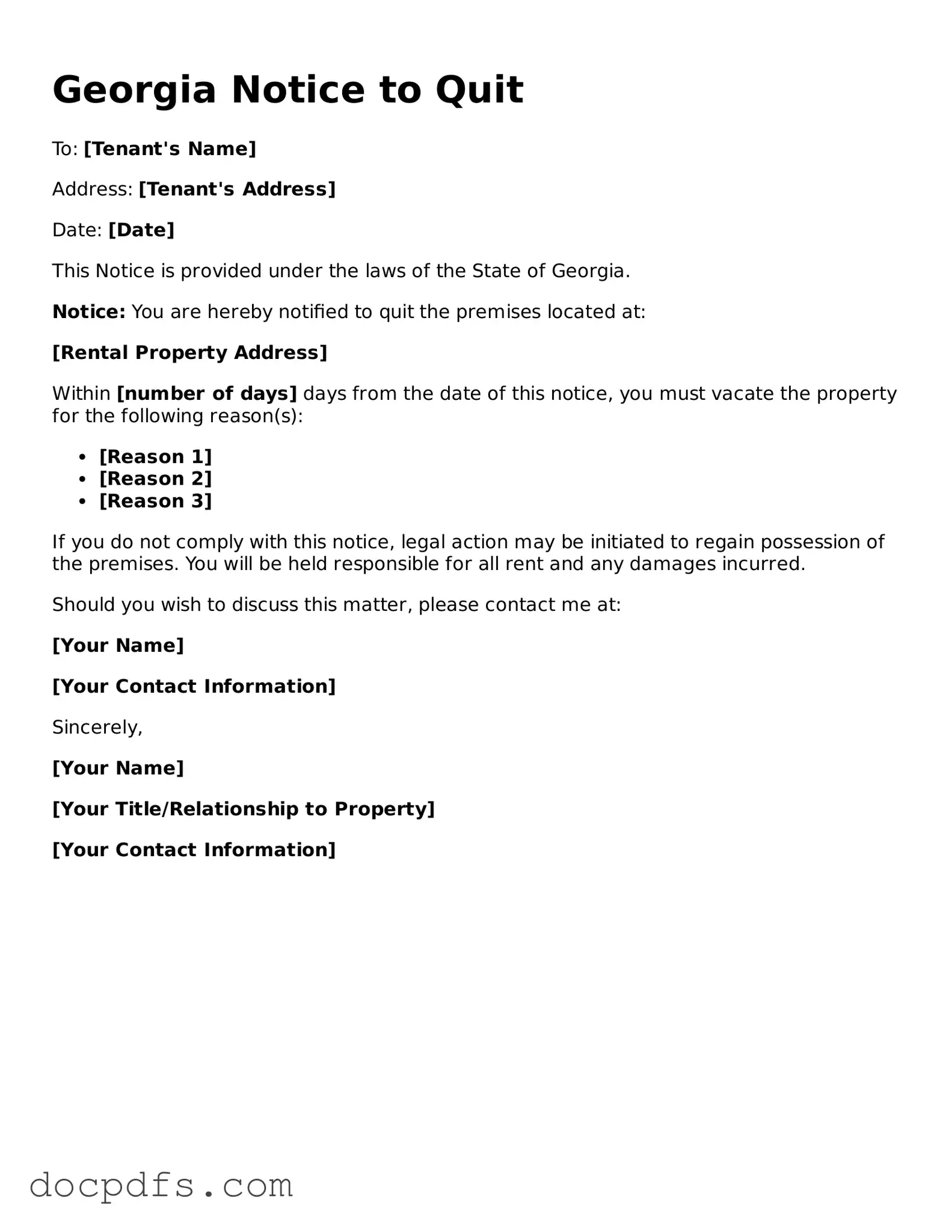The Georgia Notice to Quit form is a legal document used by landlords to formally notify tenants that they must vacate the rental property. This notice is typically issued when a tenant has failed to pay rent or has violated terms of the lease agreement.
When should a Notice to Quit be issued?
A Notice to Quit should be issued when a tenant does not comply with the lease terms. Common reasons include:
-
Non-payment of rent
-
Lease violations, such as unauthorized pets or guests
-
Engaging in illegal activities on the premises
It is important to follow the proper legal procedures when issuing this notice to ensure compliance with Georgia law.
The Notice to Quit must contain specific information, including:
-
The date the notice is issued
-
The tenant's name and address
-
The reason for the notice
-
The deadline by which the tenant must vacate the property
Including this information helps ensure clarity and legality of the notice.
How long does a tenant have to respond to a Notice to Quit?
In Georgia, the time a tenant has to respond to a Notice to Quit varies based on the reason for the notice. Typically, a tenant has:
-
Seven days to pay overdue rent
-
30 days to vacate for lease violations
It is crucial for tenants to understand the timeline to avoid further legal action.
What happens if the tenant does not comply with the Notice to Quit?
If the tenant does not comply with the Notice to Quit by the specified deadline, the landlord may proceed with eviction proceedings. This process typically involves filing an eviction lawsuit in court.
Can a tenant contest a Notice to Quit?
Yes, a tenant has the right to contest a Notice to Quit. If a tenant believes the notice was issued unfairly or without proper cause, they can present their case in court during the eviction proceedings.
Is a Notice to Quit the same as an eviction notice?
No, a Notice to Quit is not the same as an eviction notice. The Notice to Quit is a preliminary step that informs the tenant of the need to vacate. An eviction notice follows if the tenant fails to comply.
Do I need to provide a reason for the Notice to Quit?
Yes, providing a reason for the Notice to Quit is essential. The reason must be valid and comply with the terms of the lease agreement and Georgia law. This helps protect the landlord's rights and informs the tenant of the issue.
A Georgia Notice to Quit form can be obtained from various sources, including legal stationery stores, online legal document providers, or local courthouse websites. It is important to ensure that the form is compliant with Georgia law.
